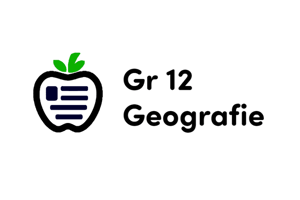Podcast
Questions and Answers
Match the following storm characteristics with their descriptions:
Match the following storm characteristics with their descriptions:
Thunderstorms = Strong updrafts and instability Low-Pressure System = Forms over warm ocean waters or in areas of strong temperature gradients Matures = Reaches its peak intensity, pressure gradient tightens, and winds increase Intensifies = Strengthen due to increased moisture and heat transfer
Match the following storm tracks influencers with their descriptions:
Match the following storm tracks influencers with their descriptions:
Jet Stream = Guide the path of the cyclone Upper-Level Divergence = Enhance the development and movement of the cyclone Topography = Influence the track and intensity of the cyclone Low-Pressure System = Characterized by a low-pressure system
Match the following weather patterns with their characteristics:
Match the following weather patterns with their characteristics:
Mid-latitude Cyclones = Characterized by a low-pressure system Thunderstorms = Strong updrafts and instability Storm Tracks = Follow specific paths influenced by jet stream and topography Low-Pressure System = Forms over warm ocean waters or strong temperature gradients
Match the following precipitation-related terms with their descriptions:
Match the following precipitation-related terms with their descriptions:
Match the following fronts and weather patterns with their characteristics:
Match the following fronts and weather patterns with their characteristics:
Match the type of front with its characteristics:
Match the type of front with its characteristics:
Match the weather pattern with its characteristic:
Match the weather pattern with its characteristic:
Match the type of precipitation with its characteristic:
Match the type of precipitation with its characteristic:
Match the feature of a mid-latitude cyclone with its description:
Match the feature of a mid-latitude cyclone with its description:
Match the type of front with its interaction:
Match the type of front with its interaction:
Match the characteristic with the type of front:
Match the characteristic with the type of front:
Flashcards are hidden until you start studying
Study Notes
Mid-Latitude Cyclone
Fronts
- A mid-latitude cyclone is characterized by the interaction of four main fronts:
- Cold Front: A boundary between a cold air mass and a warm air mass, marked by a rapid temperature drop and a shift in wind direction.
- Warm Front: A boundary between a warm air mass and a cold air mass, marked by a gradual temperature increase and a shift in wind direction.
- Occluded Front: A boundary where a cold front overtakes a warm front, causing the warm air to be forced aloft.
- Stationary Front: A boundary where a cold front and a warm front are in equilibrium, resulting in little to no movement.
Weather Patterns
- Mid-latitude cyclones are associated with various weather patterns, including:
- Cloudiness: High-level clouds (cirrus, altostratus) indicate the approach of a mid-latitude cyclone.
- Precipitation: Heavy precipitation, including rain, snow, and thunderstorms, is common ahead of the cold front.
- Winds: Gusty winds, often from the south or southwest, precede the cold front.
- Temperature: A drop in temperature, often significant, follows the passage of the cold front.
Precipitation
- Mid-latitude cyclones can produce a range of precipitation types, including:
- Rain: Heavy rain is common ahead of the cold front, particularly in the warm sector.
- Snow: Snowfall can occur on the cold side of the front, particularly in areas where cold air is deep.
- Thunderstorms: Strong updrafts and instability can lead to thunderstorms, potentially severe.
Low-Pressure Systems
- Mid-latitude cyclones are characterized by a low-pressure system, which:
- Forms: Over warm ocean waters or in areas of strong temperature gradients.
- Intensifies: As the low-pressure system moves over warm air, it strengthens due to increased moisture and heat transfer.
- Matures: As the system reaches its peak intensity, the pressure gradient tightens, and the winds increase.
Storm Tracks
- Mid-latitude cyclones often follow specific storm tracks, which are influenced by:
- Jet Stream: The position and strength of the jet stream guide the path of the cyclone.
- Upper-Level Divergence: Areas of divergence aloft can enhance the development and movement of the cyclone.
- Topography: Mountain ranges and coastal features can influence the track and intensity of the cyclone.
Mid-Latitude Cyclone
- Characterized by the interaction of four main fronts: Cold Front, Warm Front, Occluded Front, and Stationary Front.
Fronts
- Cold Front: Boundary between a cold air mass and a warm air mass, marked by a rapid temperature drop and a shift in wind direction.
- Warm Front: Boundary between a warm air mass and a cold air mass, marked by a gradual temperature increase and a shift in wind direction.
- Occluded Front: Boundary where a cold front overtakes a warm front, causing the warm air to be forced aloft.
- Stationary Front: Boundary where a cold front and a warm front are in equilibrium, resulting in little to no movement.
Weather Patterns
- Cloudiness: High-level clouds (cirrus, altostratus) indicate the approach of a mid-latitude cyclone.
- Precipitation: Heavy precipitation, including rain, snow, and thunderstorms, is common ahead of the cold front.
- Winds: Gusty winds, often from the south or southwest, precede the cold front.
- Temperature: A drop in temperature, often significant, follows the passage of the cold front.
Precipitation
- Can produce a range of precipitation types, including:
- Rain: Heavy rain is common ahead of the cold front, particularly in the warm sector.
- Snow: Snowfall can occur on the cold side of the front, particularly in areas where cold air is deep.
- Thunderstorms: Strong updrafts and instability can lead to thunderstorms, potentially severe.
Low-Pressure Systems
- Characterized by a low-pressure system, which:
- Forms: Over warm ocean waters or in areas of strong temperature gradients.
- Intensifies: As the low-pressure system moves over warm air, it strengthens due to increased moisture and heat transfer.
- Matures: As the system reaches its peak intensity, the pressure gradient tightens, and the winds increase.
Storm Tracks
- Often follow specific storm tracks, which are influenced by:
- Jet Stream: The position and strength of the jet stream guide the path of the cyclone.
- Upper-Level Divergence: Areas of divergence aloft can enhance the development and movement of the cyclone.
- Topography: Mountain ranges and coastal features can influence the track and intensity of the cyclone.
Studying That Suits You
Use AI to generate personalized quizzes and flashcards to suit your learning preferences.




